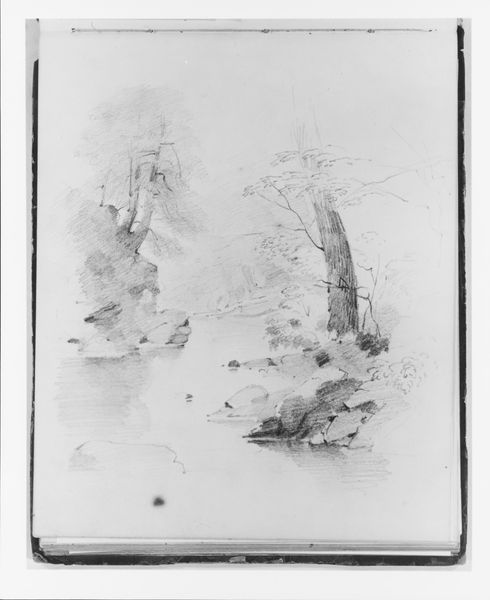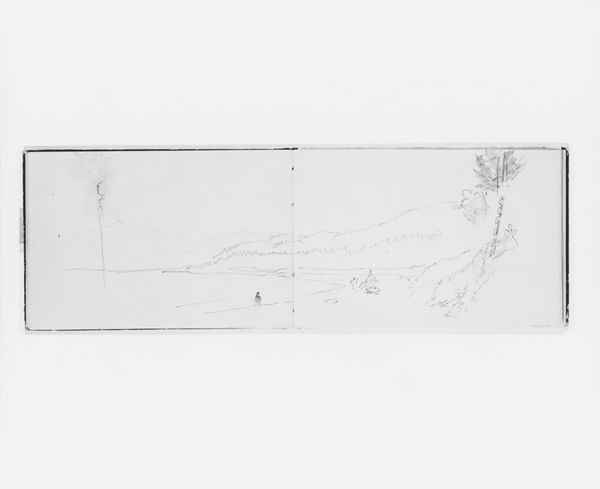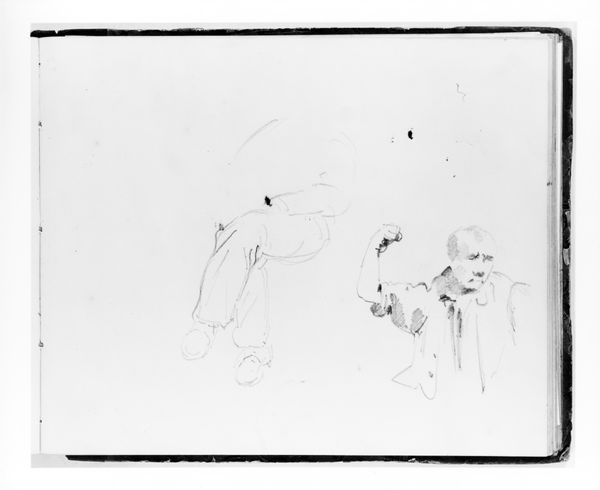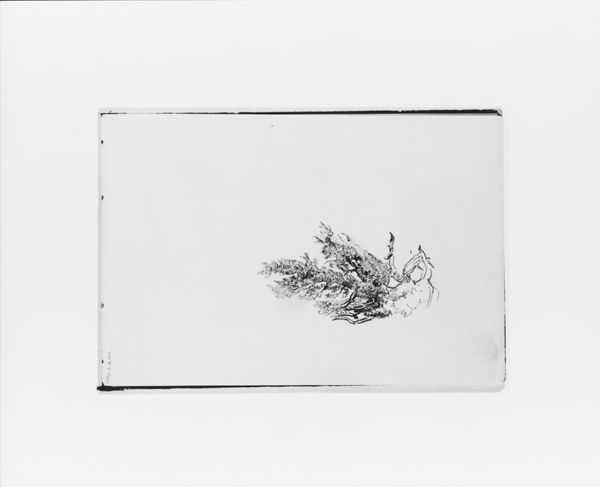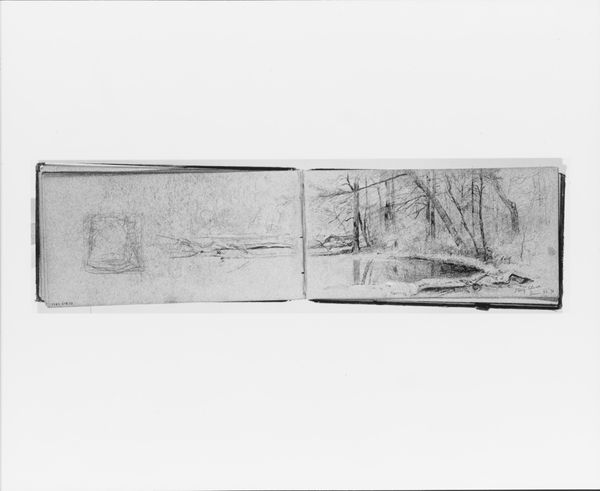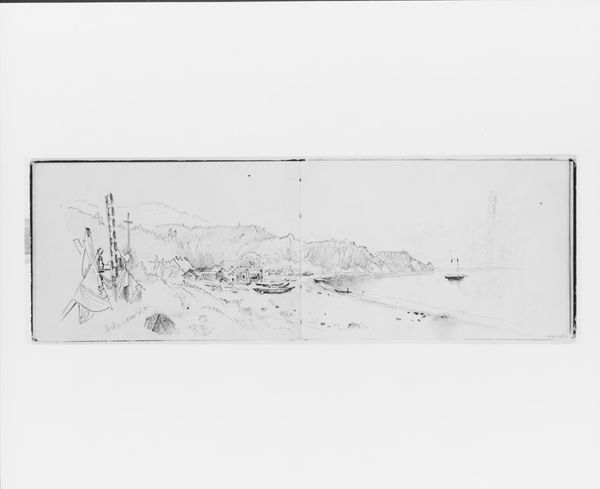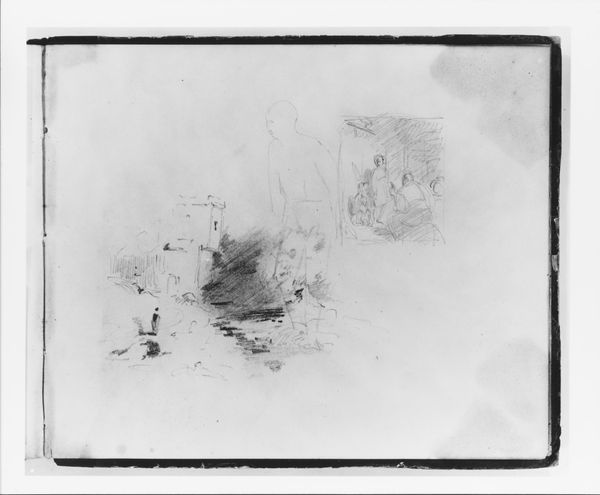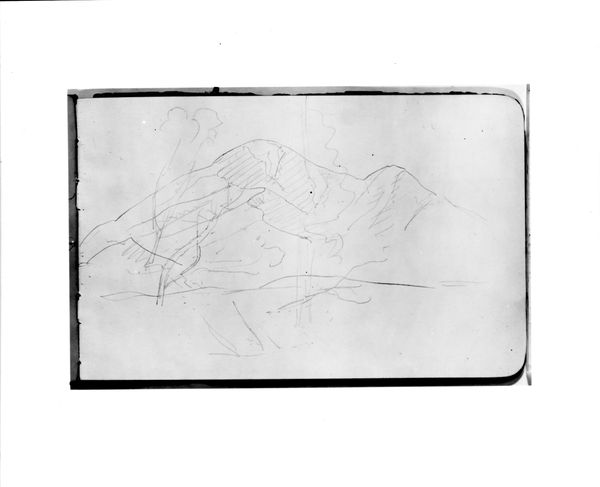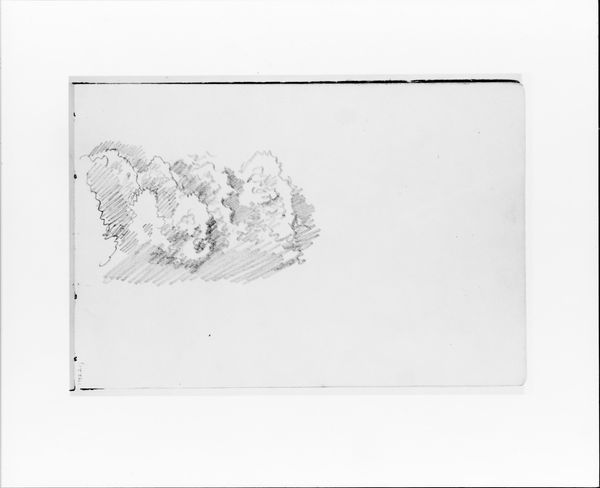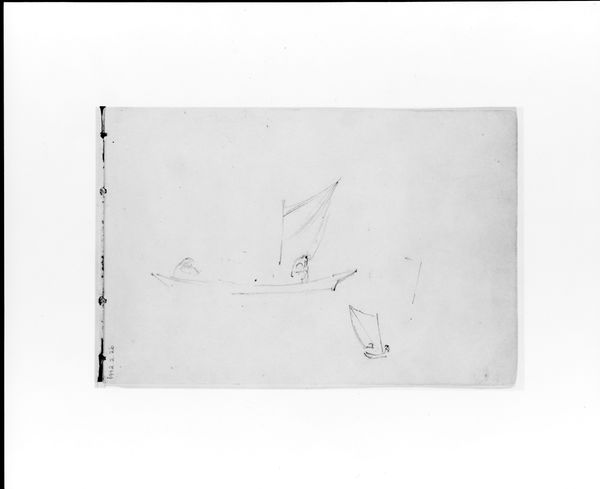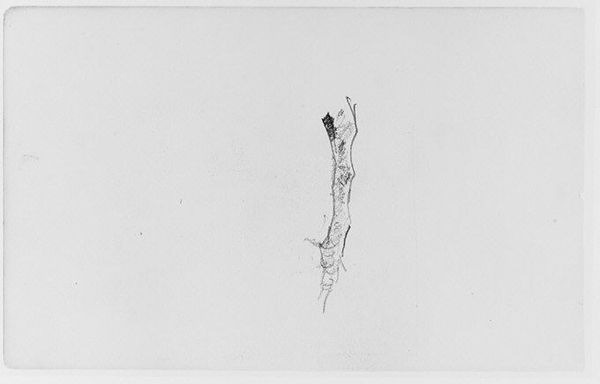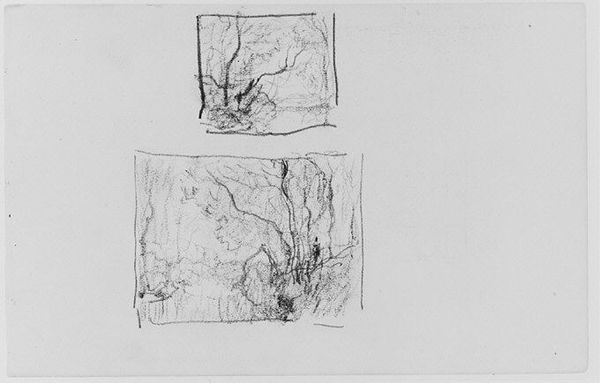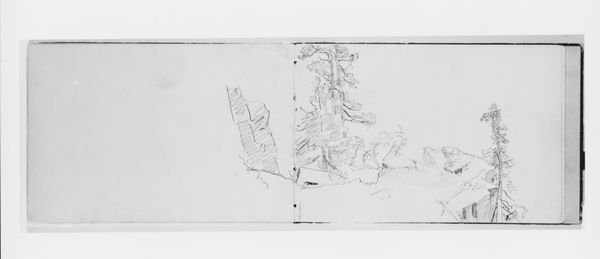
drawing, pencil
#
drawing
#
landscape
#
form
#
pencil
#
realism
Dimensions: 4 5/16 x 6 15/16 in. (11 x 17.6 cm)
Copyright: Public Domain
Curator: Here we have a pencil drawing by David Johnson, titled "Study of a Fallen Tree." The date is given as 1827 to 1908, so quite a range! It’s part of the collection here at the Metropolitan Museum of Art. Editor: There’s a real immediacy to it. Raw, even. You can practically feel the give of the graphite on paper. Curator: It’s a study, certainly, so not a finished piece intended for exhibition. Johnson's sketches were clearly intended to document the minutiae of the natural world, reflecting the broader Realist movement of the time. Think about Courbet’s landscapes… Editor: Precisely. And I wonder what kind of pencil he used. The varied densities, the almost blurred lines...the softness. The making is as important as the final image. Curator: The subject matter is telling, too. A fallen tree isn't conventionally beautiful. But Johnson highlights form, texture… perhaps even decline. Think of how landscape painting often reinforced national identity; here, though, there's something more subdued. Editor: Subdued, yes, but also practical. Was it about finding useful timber? Or just cataloging what’s available for future consumption? I am curious about how the paper itself was manufactured and the social conditions of that labor. It’s not just a tree; it’s a product. Curator: An interesting take. The lack of grand narrative definitely places it outside typical landscape painting of that period and makes you focus more on details of daily life. This reflects a shifting audience for art, a middle class increasingly interested in scenes from their own surroundings. Editor: True. It strips away any romanticism. You see the raw materials—the tree’s fibers, the graphite’s greasy mark, the paper pulp, which are connected to particular people and processes in very concrete terms. Curator: Food for thought, certainly, to consider its connection to labor practices. It pushes beyond aesthetic appreciation, allowing us to consider the artwork's place in economic systems. Editor: Absolutely. That consideration adds new layers of depth to a seemingly simple drawing.
Comments
No comments
Be the first to comment and join the conversation on the ultimate creative platform.
